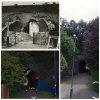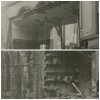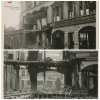The Shoothill collection of photos contains many photos of bomb damaged streets which don't seem to have been identified. This first set #1 -#12 shows damage to non-residential properties. I've numbered each photo so that if you wish to comment it would be helpful to quote the number of the photo. Many thanks. Viv.
Photos #1 -#4
Photos #1 -#4




















